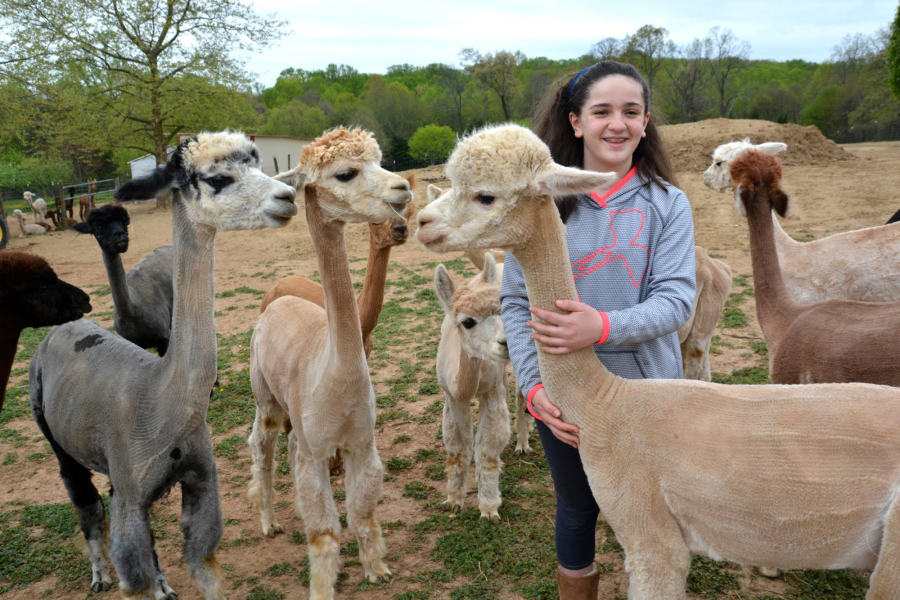After school, fifth-grader Sophia Lysantri can often be found hanging out with about 50 long-necked, adorable friends in Woodbine, Maryland. Sophia helps her family raise and care for alpacas.
Native to the Andes Mountains in South America, alpacas are domesticated camelids — not wild — and are related to camels and llamas. Their fleece, a silky natural fiber usually lighter and less scratchy than sheep wool, is popular for clothing. In the spring, shearing — a whole-body haircut — helps alpacas stay cool during the summer.
One of Sophia’s favorite tasks is carding (untangling) the fiber before her mother hand-spins it into yarn. Alpaca fiber comes in many beautiful natural colors ranging from pure white to black, as well as many shades of brown, beige and gray, but Sophia loves dying the fiber to make bright colors. Her family sells yarn, natural fiber and homemade alpaca products.
“Alpacas are not aggressive at all. They’re very gentle,” Sophia said. “The more time you spend with them, the friendlier they are.” And they hum — really! It’s a sweet sound, but it reflects many emotions, such as being content, cautious or worried.
Sophia, who often gives tours of her family’s farm, is frequently asked whether alpacas spit.
“Only when they are stressed, and then usually they spit at each other,” she said. She advises visitors to “stand quietly and let the animals come to you,” cautioning that “they don’t like having their heads touched. Stroke them gently on the neck or back.”
“You can’t have just one alpaca,” said Brandon Tenney, 16, who helps his family raise alpacas in Catlett, Virginia. “They’re very social animals.” The Alpaca Owners Association notes, “Alpacas have very strong herding instincts and need the companionship of other alpacas to thrive.”
“There’s a leader in each pasture,” Brandon said. Alpacas are very curious, so when something new comes near, the whole bunch will follow the leader, often running together to get a better view, whether it’s of a person or another animal.
Brandon, a high school junior, and his sister Danielle, 20, have been helping raise their family’s alpacas for 11 years. The day starts at 5:30 a.m., with chores including feeding the 51 alpacas and cleaning their stalls.
Danielle jokes that she schedules college classes around alpaca feeding times. She is studying to be a large-animal veterinarian — one who cares for horses, cows, llamas, alpacas, sheep, etc. She particularly loves newborn alpacas.
Brandon is tuned in to each alpaca’s personality.
“They’re all different,” he said, noting that alpacas display emotions much like humans do. Around dusk, his family loves watching the alpacas engage in pronking — a playful, bouncing run signifying a happy feeling.



